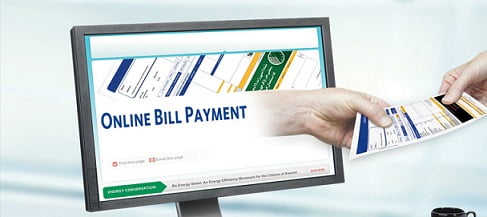Flex Spending Accounts save you taxes on medical and health-related payments
If your employer offers what’s known as a flexible spending account for medical expenses (also known as a “flex spending account,” or “FSA”) then, if you enroll, you can have money withheld from each paycheck on a pre-tax basis that can be used to pay for medical, dental, vision, or similar expenses not covered by your insurance. In short, a flex spending account is a tax-efficient way to pay for out-of-pocket healthcare costs.
To illustrate how a flexible spending account works, let’s say that you are planning to have a special dental procedure that will cost $2,000. While this particular procedure is not covered by your health insurance or dental plan, it does qualify as medical procedure that you can pay for with your flex spending account. In fact, a flexible spending account works so well that when the procedure is done your dentist will bill you…$2,000. But wait, if a flex spending account is supposed to save you so much money then why are you still being billed $2,000 by your dentist? Where are the savings? What’s important to understand is that a flex spending account doesn’t lower your actual health care charges, i.e., a $2,000 dental procedure will still cost $2,000. However, paying for qualified medical and health-related expenses from a FSA does lower your tax bill. To illustrate, if contributed $166.67 each month to your flex spending account then your total FSA contribution for the year would be $2,000. Not only would that be enough to fully pay for your dental procedure, but it would lower your FICA tax and income tax as follows.
| FSA Medical – Tax Savings | FICA Taxes | Income Taxes | Totals |
| Monthly FSA Contribution | $166.67 | $166.67 | $166.67 |
| Times: Months in the Year | 12 | 12 | 12 |
| Equals: Annual FSA Contribution | $2,000.00 | $2,000.00 | $2,000.00 |
| Times: Tax Rate | 5.65% | 21.00% | 26.65% |
| Equals: Tax Savings | $113.00 | $420.00 | $533.00 |
| Monthly Savings | $44.42 |
What this table shows is that if you used flex dollars to pay for your dental procedure then you would lower your overall tax bill for the year by $533.00, which translates into a savings of $44.42 a month ($533.00 divided by 12 months). Viewing the savings a different way, if you paid for your dental procedure using an FSA, you would reduce the after-tax cost of your dental bill from $2,000 to $1,467 ($2,000 less the tax savings of $533), a savings of almost 27%! In my book those are attention-getting numbers for regular people looking for ways to use their money more effectively.
Special rules for the flexible spending account

It’s important to note that flex spending accounts have some rules, characteristics and limitations that you need to be aware of. Following are some of the key ones:
- You have to sign up to participate in a flex spending account through your employer. Check your company’s website or contact your human resources department to find out how.
- You have to make a decision in late November or early December of the current year (e.g. 2020) on how much of each paycheck you’re going to contribute to your flex spending account for the next year (e.g. 2021). Project your medical expenses as carefully as possible, because once you’ve made your decision you can’t change your mind unless you have a “qualifying life event” (a change in your marital status, the birth of a child, you’re starting a new job, etc.).
- $3,500 is presently the maximum amount an individual can contribute to an FSA each year. These flex dollars can be used to pay for personal or family medical costs.
- Your flexible spending account contributions are not refundable and you can’t “bank” them for the next year, so use all the money you contribute to your FSA by the end of the year or lose it forever![2]
- On the positive side, you can file a claim for flex dollars in advance of having them withheld from your paycheck. For example, if you planned to flex $1,200 over the course of the entire year (equal to $100 per paycheck if you were paid monthly), then if you had a $1,200 worth of qualifying medical expenses in January you could immediately file for a full reimbursement (as opposed to having to wait until December when your monthly contributions finally caught up with your expenditures).[3]
How do you access your flex dollars?
So how do you go about accessing these magical flex dollars? Note that a flex spending account is not like money in a bank account somewhere over which you have complete control. In order to access money from your FSA you have to provide your insurance administrator with proof that you actually paid qualifying, unreimbursed medical costs. Once you’ve done so then they’ll reimburse you, either by sending you a check or wiring the money to your bank account. For example, if you had to pay a $30 co-payment out of pocket then you could submit that bill to your insurance administrator for a $30 reimbursement. But once again, you cannot get reimbursed for medical costs that were covered by your health insurance, only unreimbursed amounts!
Also – and this is very important – if you have any doubts about whether an expense qualifies for reimbursement that it’s important to check in advance with your FSA insurance administrator before spending any money (get their contact information from your employer’s HR group). Remember, one of the FSA administrator’s responsibilities is to ensure that flex reimbursements are not paid out unless they’re for qualifying expenses. With that in mind, here are the key questions I would ask your FSA administrator BEFORE spending a significant amount of money on a health/dental/vision/medical expense for which you want a flex reimbursement.
- Is this procedure, item, treatment, etc. an expense that qualifies for a reimbursement from my flex spending account?
- What documentation will you need in order to be able to provide me with a reimbursement for the expense? Can I simply spend the money and provide you with the receipt, or do I need a letter from a doctor or some other documentation in advance of making the purchase?
Again, it can be very expensive to assume! Resolving these questions up front eliminates surprises and helps you to avoid making a very expensive mistake. Remember, when following flex spending account procedures it’s not only what you spend money on that enables you to get reimbursed, but how you go about doing it is also very important.[4]
How do you estimate medical expenses prior to enrollment in an FSA program?
Given that you have to enroll in a flexible spend account program for the coming year in late November or early December, how do you estimate what your medical and health-related expenses will be with any degree of accuracy? To help, I recommend considering the following:
- Knowns – How often do you have set appointments to go to the doctor, dentist or ophthalmologist during the year? What are your out-of-pocket costs for these visits? Do you pay any out-of-pocket costs for prescription medication that you take on a regular basis? What are your other fixed/known medical, dental, or vision costs?
- Trends – You don’t always go to the doctor because you have an appointment. Sometimes you get sick, get injured, or have an accident. While it’s impossible to say for sure, try and take into account your overall pattern of doctor-type visits over the course of the year when estimating how much to flex each paycheck.
- Special procedures – Like the dental example above, are you planning on any special health-related procedures in the coming year? Perhaps you are having LASIK surgery, or a string of rehab appointments that you don’t normally have. Again, if you’re aware of any significant one-time or recurring medical expenses coming up in the next year then be sure to take those into account.
Finally, even if you take these 3 things into account, recognize that it is still very difficult to say in November what your medical costs will be for the coming year. In other words, there’s no getting around having to do a bit of guesswork when it comes to deciding how much you should flex.
Is it better to overestimate or underestimate how much you should flex?
If you have to estimate how much to flex then, from a strategic personal finance point of view, are you better off underestimating or overestimating your medical/health costs? For example, modifying the dental example above, let’s say the dentist will not be able to determine the exact cost of the procedure until it’s actually under way. Instead, all he or she can tell you for now is that on the low end the procedure will cost $1,000 but, depending on what they find, the cost could be as high as $2,000. Faced with such uncertainty, is it better to estimate at the low end ($1,000), the high end ($2,000), or somewhere in between? The answer is that it’s more cost-effective to flex based on an estimate at the lower end of the range. To understand why let’s take a look at a few scenarios. First, assuming the total cost of the dental procedure ends up being $2,000, let’s see the financial difference between flexing $1,000 and $2,000.
| Actual Cost of Dental (or Medical) Procedure | $2,000.00 | ||||
| A | B | C | D | E | F |
| Actual Cost/Flex Contribution | Combined FICA & Income Tax Rate | Tax Savings (A x B) | After-Tax Cost of Flex Dollars (A – C) | Out-of-Pocket Cost (Cost – A) | Total Cost (D + E) |
| $1,000.00 | 26.65% | $266.50 | $733.50 | $1,000.00 | $1,733.50 |
| $2,000.00 | 26.65% | $533.00 | $1,467.00 | $0.00 | $1,467.00 |
| Difference | $266.50 |
What this chart shows is that if you flexed $1,000 then the after-tax cost of doing so would only be $733.50, but you would have to come up with another $1,000 out-of-pocket to pay the balance of your dental bill. Thus the total cost of your $2,000 dental procedure would be $1,733.50 if you flexed $1,000. On the other hand, if you flexed the full $2,000 then you could pay for the entire procedure with flex dollars, and it would only cost you $1,467.00 on an after-tax basis. As a result, if the procedure ended up being $2,000 then it would cost you an additional $265.50 if you flexed $1,000 instead of $2,000 (see the table above). But how can that be? Didn’t I just say that it’s generally a smarter, safer play to flex on the low side? If that’s the case then why did it cost more money? To see things in the right perspective, take a look at how things turn out financially if the procedure only turns out to be $1,000.
| Actual Cost of Dental (or Medical) Procedure | $1,000.00 | ||||
| A | B | C | D | E | F |
| Actual Cost/Flex Contribution | Combined FICA & Income Tax Rate | Tax Savings (A x B) | After-Tax Cost of Flex Dollars (A – C) | Out-of-Pocket Cost (Cost – A) | Total Cost (D + E) |
| $1,000.00 | 26.65% | $266.50 | $733.50 | $0.00 | $733.50 |
| $2,000.00 | 26.65% | $533.00 | $1,467.00 | N/A | $1,467.00 |
| Difference | $733.50 |
What this chart shows is that if you flexed $1,000 then the after-tax cost of the dental procedure would be $733.50. On the other hand, if you flexed $2,000 the good news would be that you definitely wouldn’t owe anything out of pocket. But the bad news is that it would cost you $1,467.00 on an after-tax basis to flex $2,000, and if you weren’t able to find a use for the unused $1,000 that you flexed then it would end up costing you 733.50 on an after-tax basis (see the chart above)!
In summary, following the examples above, if you estimated your flex on the low end ($1,000) when the cost turned out to be high ($2,000) then you would have to come up with an additional $266.50. Of course that’s not great news, but if you estimated your flex on the high end ($2,000) when the actual cost was low ($1,000) then it would end up costing you $733.50, or a whopping $467 more that had to been more conservative (on the low end) in your flex estimate!
Find ways to spend excess flexible spending account dollars before the end of the year
Despite your best planning, efforts and intentions, what if you find yourself in a situation where you’ve overestimated the amount of flex dollars that you need for the year? In other words, following the example above, what if you’ve done all the health-related things that you planned, but you still have $1,000 flex dollars left (or whatever the amount happens to be)? The answer? It’s time to spend some money. I know that sounds a little weird, to manage your money effectively by spending it. But remember, according to the flex rules if you don’t use it you lose it…so use it! And how do you do that effectively, to your best advantage? Here are a few ideas.
- Did you have one dental procedure done this year and you were waiting until next year to have another done? Consider rescheduling next year’s procedure for this year.
- Have your kids evaluated by an orthodontist.
- Get an eye exam so that you can get your eye prescription updated.
- Get a new pair of glasses based on your updated prescription. If you already have an updated pair then get a backup pair for emergencies. If you already have a backup pair then consider getting a pair of prescription sunglasses (regular sunglasses would not qualify).
- Load up on contact lens.
- If you’re on prescription medication of any kind then get as much as you can before the end of the year.
- Have everyone in your family get a physical.
- Are you having LASIK surgery done to correct your vision? If you have a lot of flex left, but not enough to cover the entire cost, then consider having one eye done before the end of the year and the other eye done at the beginning of the next.
- Obtain or replace medical equipment or devices, such as a wheelchair (but check to see if the expense qualifies before spending any money!).
In summary, as long as you don’t drastically overshoot the runway, it’s not too difficult to put excess flex dollars to work before the year ends. But keep in mind that advance planning will be needed. For example, if you call your dentist on December 15th then you’re going to have a very difficult time getting an appointment, because everyone else with excess flex dollars is trying to spend their money at the same time you are! So again, be smart, don’t wait until the last minute…and try to do a more accurate estimate for the next year!
[1] FICA taxes are a combination of your Social Security and Medicare taxes.




